Jeff Mitchell’s Top 20 Films of 2015
- “Phoenix” - Nina Hoss delivers an unforgettable performance as a wounded concentration camp survivor who undergoes significant facial plastic surgery, but her appearance creates more than considerable complications when she travels back to Berlin after the war to find her husband. This movie took me by surprise
.
-
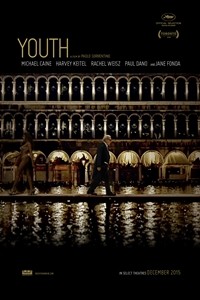 “Youth” - Director Paolo Sorrentino offers a story of two longtime friends - played by Michael Caine and Harvey Keitel - who ponder big and small questions under a backdrop of an extravagant hotel in the Swiss Alps. Sorrentino intermingles stunning visuals and pleasing sounds with intimate conversations, and Caine and Keitel are at the top of the game.
“Youth” - Director Paolo Sorrentino offers a story of two longtime friends - played by Michael Caine and Harvey Keitel - who ponder big and small questions under a backdrop of an extravagant hotel in the Swiss Alps. Sorrentino intermingles stunning visuals and pleasing sounds with intimate conversations, and Caine and Keitel are at the top of the game.
- “Love & Mercy” - Paul Dano and John Cusack play Brian Wilson in his 20s and 40s, respectively, as the film showcases The Beach Boys’ leader as a brilliant, young musician and a damaged individual under the abusive “care” of a manipulative doctor. An insightful and well-acted film for Beach Boys fans and non-fans, alike.
- “Bone Tomahawk” - Kurt Russell, Patrick Wilson, Matthew Fox, and Richard Jenkins leave the town of Bright Hope on a perilous journey to rescue some of its citizens from a group of cannibals. Although this very well-written and acted film does take an exceptionally gruesome turn in the final act, this is a highly engaging and memorable western.
- “Straight Outta Compton” - Director F. Gary Gray recounts the history of N.W.A, a seminal rap band of the 1980s, in a complimentary and comprehensive biopic of the group’s rise to national prominence, inner financial turmoil and racism the band members faced while growing up and during their stardom.
- “Shaun the Sheep Movie” - In the most enjoyable animated film of the year, a sheep named Shaun
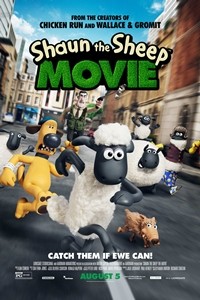 engineers a day off for the flock but inadvertently creates a big problem for the farmer. The painstaking top-motion animation (from Aardman Animations, the “Wallace and Gromit” folks) is only topped by the totally creative narrative and endearing characters.
engineers a day off for the flock but inadvertently creates a big problem for the farmer. The painstaking top-motion animation (from Aardman Animations, the “Wallace and Gromit” folks) is only topped by the totally creative narrative and endearing characters.
- “Timbuktu” - Director Abderrahmane Sissako presents an unsettling picture of extreme Islamic rule when a small - but forceful - group of ideologues have control of the city. The main story focuses on a rancher’s tale of woe, but we also see the consequences of others who fail to fall in line. From the outside, Timbuktu looks like a peaceful town, but looks can be deceiving.
- “’71” - Director Yann Demange recreates the ground-level street war in the battered and beaten down brick of Belfast between the loyalists (to the UK) and the nationalists, when a young British private, Gary Hook (Jack O’Connell), finds himself behind enemy lines. Double-crosses and danger seemingly appear on every block in this visceral and effective war movie.
-
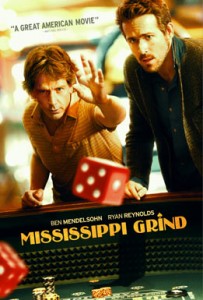 “Mississippi Grind” - Gerry (Ben Mendelsohn) and Curtis (Ryan Reynolds) are a pair of degenerate gamblers who embark on a sooty trip down America’s most famous river to make some bucks. They form an immediate friendship and share great on-screen rapport, while directors/writers Anna Boden and Ryan Fleck make us literally flip a coin to guess if they will win or lose at every turn. Mendelsohn’s performance deserves an Oscar nomination.
“Mississippi Grind” - Gerry (Ben Mendelsohn) and Curtis (Ryan Reynolds) are a pair of degenerate gamblers who embark on a sooty trip down America’s most famous river to make some bucks. They form an immediate friendship and share great on-screen rapport, while directors/writers Anna Boden and Ryan Fleck make us literally flip a coin to guess if they will win or lose at every turn. Mendelsohn’s performance deserves an Oscar nomination.
- “Carol” - Carol (Cate Blanchett) and Therese (Rooney Mara) begin a lesbian relationship in the early 1950s, and the two leads deliver electric performances by expressing their characters’ true feelings while also stifling them - and proceeding with caution - due to the more conservative time period. Meanwhile, director Todd Haynes meticulously captures a 1950s atmosphere as the entire film feels like we stepped into a dreamlike, time warp haze.
- “Ex Machina” - A 26-year-old programmer (Domhnall Gleeson) - working for a wildly successful tech corporation - wins “a golden ticket” to visit its founder’s (Oscar Issac) home and then meets an artificial life form, Ava (Alicia Vikander), who looks like a beautiful 20-something woman. Supported by intense performances, writer/director Alex Garland provides an excellent setup for this man and machine encounter with oodles of eerie sci-fi weirdness and thought-provoking questions about humanity.
- “Brooklyn” - Saoirse Ronan shines in a beautifully-filmed movie about a young Irish woman starting a new
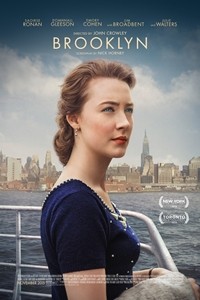 life in the bustling streets of New York City while struggling with the emotional pulls of home in County Wexford. Along with Eilis’ (Ronan) homesickness, writer Nick Hornby pens several amusing and warm moments with her boarding housemates and a new love interest, and with the film’s throwback vibe to pictures of yesterdecade, “Brooklyn” is the most graceful and lovely cinematic experience of the year.
life in the bustling streets of New York City while struggling with the emotional pulls of home in County Wexford. Along with Eilis’ (Ronan) homesickness, writer Nick Hornby pens several amusing and warm moments with her boarding housemates and a new love interest, and with the film’s throwback vibe to pictures of yesterdecade, “Brooklyn” is the most graceful and lovely cinematic experience of the year.
- “Mustang” - Five sisters - raised by their grandmother - harmlessly play in the Black Sea with some boys, but their uncle responds with massively excessive repercussions in a movie which intimately captures the struggle between child and adult and freedom of expression and oppression more than any other film that I can remember. The girls respond to their repressive new environment in varying ways, while writer/director Deniz Gamze Erguven organically communicates the involved bonds of sisterhood and heartbreaking moments within emotionally and physically enclosed spaces.
-
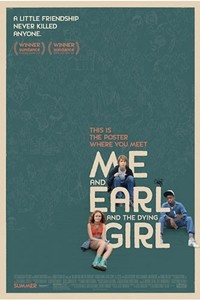 “Me and Earl and the Dying Girl” - In one of the most effective high school stories in long memory, a self-doubting teen (Thomas Mann) befriends a fellow student stricken with leukemia (Olivia Cooke), and the particularly well-written script provides an equally hilarious and affecting journey about teenagers coping with untimely circumstances. Director Alfonso Gomez-Rejon guides the material with a Wes Anderson-like flair, as Mann, Cooke and RJ Cyler (as Earl) deliver especially likable and sympathetic performances while navigating through the clumsy, exposed and thoughtful emotions of youth.
“Me and Earl and the Dying Girl” - In one of the most effective high school stories in long memory, a self-doubting teen (Thomas Mann) befriends a fellow student stricken with leukemia (Olivia Cooke), and the particularly well-written script provides an equally hilarious and affecting journey about teenagers coping with untimely circumstances. Director Alfonso Gomez-Rejon guides the material with a Wes Anderson-like flair, as Mann, Cooke and RJ Cyler (as Earl) deliver especially likable and sympathetic performances while navigating through the clumsy, exposed and thoughtful emotions of youth.
- “It Follows” - Writer/director David Robert Mitchell creates a horror film masterpiece with a story of a mysterious being who singularly follows an ordinary student through the suburbs of Detroit, MI. Mitchell’s film offers an obscure late 70s/early 80s vibe with the period’s cars, clothes and living room decors while accompanying the landscape with a synthesizer-filled soundtrack and hand-wringing sequences reminiscent of 1978’s “Halloween”. With its unsettling creepiness and a most original antagonist, “It Follows” brings an intoxicating blend of old-school horror and brand new ideas.
- “Listen to Me Marlon” - Movie icon Marlon Brando kept his personal life extremely private, but he
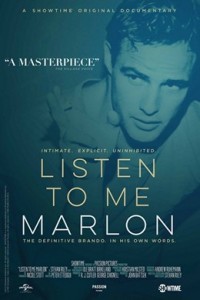 chronicled hundreds of hours of personal audio recordings as a diary of sorts, and director Stevan Riley pieced together the man’s personal thoughts in a truly amazing reveal over a 1 hour 43 minute runtime. Paired with photos and historical video footage of movie clips and interviews, Brando - in his own words - recites and reflects his innermost views on his romantic relationships, colleagues, preparation for his most coveted roles, and his painful childhood. This extraordinary find is easily the documentary of the year.
chronicled hundreds of hours of personal audio recordings as a diary of sorts, and director Stevan Riley pieced together the man’s personal thoughts in a truly amazing reveal over a 1 hour 43 minute runtime. Paired with photos and historical video footage of movie clips and interviews, Brando - in his own words - recites and reflects his innermost views on his romantic relationships, colleagues, preparation for his most coveted roles, and his painful childhood. This extraordinary find is easily the documentary of the year.
- “Wild Tales” - Wild is the definitive word when describing this wonderfully sadistic, sarcastic and hilarious ride into six devilish tales of revenge from the mind of writer/director Damian Szifron. Each story opens without fanfare or opening titles, jumps right into the daily lives of ordinary people, throws them life-changing curve balls, and lets the chips fall where they may. Wholly original and terrifically smart, this roller coaster ride will make you laugh, cringe and also very hopeful none of these “Wild Tales” will ever happen to you. A cinematic home run.
-
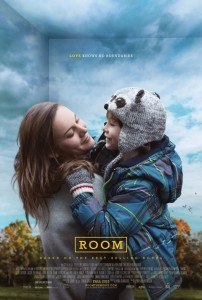 “Room” - Brie Larson delivers the performance of year as a young mother living in an uncommonly cramped one-room space with her 5-year-old son (Jacob Tremblay). The movie initially presents the circumstances of their odd living situation as a confusing puzzle, but eventually the secrets of “the room” are revealed, and the narrative then splits from one incredibly difficult challenge to an altogether different confrontation. Narrated - at times - by Jack (Tremblay), this raw story expresses the beauty of our everyday world through a child’s voice, and Ma (Larson) professes the feverous bond of mother and child through her actions.
“Room” - Brie Larson delivers the performance of year as a young mother living in an uncommonly cramped one-room space with her 5-year-old son (Jacob Tremblay). The movie initially presents the circumstances of their odd living situation as a confusing puzzle, but eventually the secrets of “the room” are revealed, and the narrative then splits from one incredibly difficult challenge to an altogether different confrontation. Narrated - at times - by Jack (Tremblay), this raw story expresses the beauty of our everyday world through a child’s voice, and Ma (Larson) professes the feverous bond of mother and child through her actions.
- “Mad Max: Fury Road” - After a 30-year absence, Mad Max makes a triumphant return to the big screen in a completely enthralling action picture which is far superior to its three predecessors. Nearly the entire film plays out as a non-stop, mind-boggling chase through a barren Australian wasteland, and the action grabs you by the throat and periodically cuts off your air supply for two hours. “Star Wars: The Force Awakens” is great, but Tom Hardy and Charlize Theron star in the thrill ride of the year.
- “Spotlight” - Led by an outstanding ensemble cast (Michael Keaton, Mark Ruffalo, Stanley Tucci, Rachel
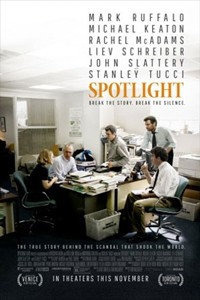 McAdams, and Liev Schreiber), director/co-writer Tom McCarthy provides a wholly mesmerizing account of a tenacious group of Boston Globe reporters who uncover a widespread Catholic priest sexual abuse scandal. The journalists bang on figurative locked doors while dozens of Boston players - big and small - carry differing agendas to expose or cover up the sordid details. McCarthy opens up a world of exemplary journalism practices to the audience and reinforces the importance of the media as the Fourth Pillar of Democracy. This riveting movie leaves you hanging on every moment and is the best picture of 2015.
McAdams, and Liev Schreiber), director/co-writer Tom McCarthy provides a wholly mesmerizing account of a tenacious group of Boston Globe reporters who uncover a widespread Catholic priest sexual abuse scandal. The journalists bang on figurative locked doors while dozens of Boston players - big and small - carry differing agendas to expose or cover up the sordid details. McCarthy opens up a world of exemplary journalism practices to the audience and reinforces the importance of the media as the Fourth Pillar of Democracy. This riveting movie leaves you hanging on every moment and is the best picture of 2015.

 Monte Yazzie’s Best Films of 2015
Monte Yazzie’s Best Films of 2015
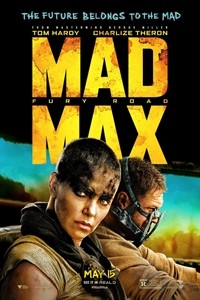 Imperator Furiosa, Ms. Theron confidently controls the film with stunning screen presence. Mr. Miller executes the film with exceptional style and skill, making “Mad Max: Fury Road” feel more suited for the arthouse than the grindhouse.
Imperator Furiosa, Ms. Theron confidently controls the film with stunning screen presence. Mr. Miller executes the film with exceptional style and skill, making “Mad Max: Fury Road” feel more suited for the arthouse than the grindhouse.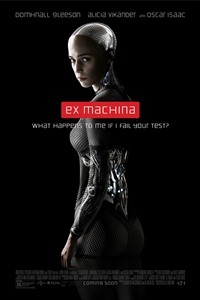 Machina”, a methodically structured film with an intelligent narrative directed by Alex Garland. While many of the films that deal with science fiction are cluttered with special effects, Mr. Garland utilizes these tools to build an impressive, beautiful, and emotional artificial being known as Ava, played impeccably by actor Alicia Vikander. “Ex Machina” focuses on relationships between men and women, the advancing world and how it connects with progressing technology, and the trappings and limitations of science. It is an exceptional film that asks difficult questions and allows the viewer to interpret the answers however they choose.
Machina”, a methodically structured film with an intelligent narrative directed by Alex Garland. While many of the films that deal with science fiction are cluttered with special effects, Mr. Garland utilizes these tools to build an impressive, beautiful, and emotional artificial being known as Ava, played impeccably by actor Alicia Vikander. “Ex Machina” focuses on relationships between men and women, the advancing world and how it connects with progressing technology, and the trappings and limitations of science. It is an exceptional film that asks difficult questions and allows the viewer to interpret the answers however they choose. fight a faceless foe. It’s a film that lingers in an atmosphere of fear and builds suspense in subtle yet effective ways. Whether the enchanting cinematography by Roger Deakins, which is a visual descent into darkness, or the narrative penned by Taylor Sheridan that displays the bleak disenchantment of the whole situation. “Sicario” is consistently tense and foreboding; it’s a film that drops the viewer in the middle of a frantic and confused setting, and then continues the journey amidst building chaos. Director Denis Villeneuve is a skillful director and “Sicario” is one of his best films.
fight a faceless foe. It’s a film that lingers in an atmosphere of fear and builds suspense in subtle yet effective ways. Whether the enchanting cinematography by Roger Deakins, which is a visual descent into darkness, or the narrative penned by Taylor Sheridan that displays the bleak disenchantment of the whole situation. “Sicario” is consistently tense and foreboding; it’s a film that drops the viewer in the middle of a frantic and confused setting, and then continues the journey amidst building chaos. Director Denis Villeneuve is a skillful director and “Sicario” is one of his best films. In the eighth film from Quentin Tarantino the director takes a group of unredeemable characters and locks them in a shack during a blizzard in post-Civil War Wyoming. The three-hour long epic, released in a special 70mm presentation, displays Mr. Tarantino meticulously building a mystery while also incorporating an interesting amount of social commentary that transcends beyond the time period depicted in the film; it’s compelling to see everything slowly unravel. The film finds further success with stunning cinematography and a beautiful score, composed by the legendary Ennio Morricone. “The Hateful Eight” is Quentin Tarantino self-indulgently doing what he does best.
In the eighth film from Quentin Tarantino the director takes a group of unredeemable characters and locks them in a shack during a blizzard in post-Civil War Wyoming. The three-hour long epic, released in a special 70mm presentation, displays Mr. Tarantino meticulously building a mystery while also incorporating an interesting amount of social commentary that transcends beyond the time period depicted in the film; it’s compelling to see everything slowly unravel. The film finds further success with stunning cinematography and a beautiful score, composed by the legendary Ennio Morricone. “The Hateful Eight” is Quentin Tarantino self-indulgently doing what he does best.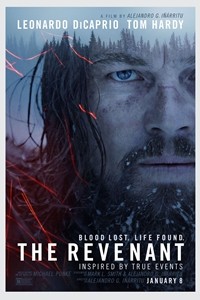
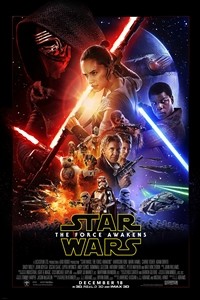 The movie event of the year arrived in theaters, with long lines of people waiting, still waiting, to watch this film. Director J.J. Abrams did not disappoint with “Star Wars: The Force Awakens”. It’s a film that gives older audiences joyous nostalgic feelings and offers a new generation of fans that memorable movie magic experience.
The movie event of the year arrived in theaters, with long lines of people waiting, still waiting, to watch this film. Director J.J. Abrams did not disappoint with “Star Wars: The Force Awakens”. It’s a film that gives older audiences joyous nostalgic feelings and offers a new generation of fans that memorable movie magic experience. Joy
Joy
 Blanchett and Mara offer award-worthy performances in ‘Carol’
Blanchett and Mara offer award-worthy performances in ‘Carol’
 The Big Short
The Big Short
 ‘Concussion’ draws some frightening conclusions
‘Concussion’ draws some frightening conclusions
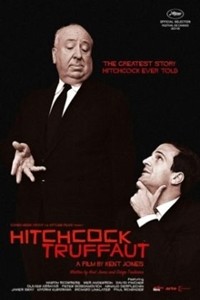 Hitchcock/Truffaut
Directed by: Kent Jones
Hitchcock/Truffaut
Directed by: Kent Jones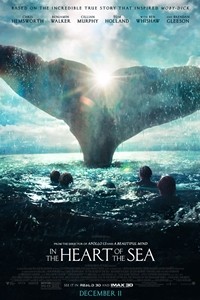 In the Heart of the Sea
In the Heart of the Sea
 ‘Krampus’ does not grant enough horror or comedy wishes
‘Krampus’ does not grant enough horror or comedy wishes
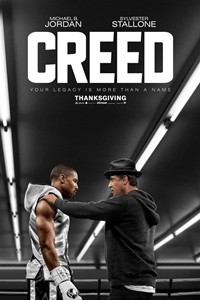 Jordan and Stallone form a winning combination in ‘Creed’
Jordan and Stallone form a winning combination in ‘Creed’








